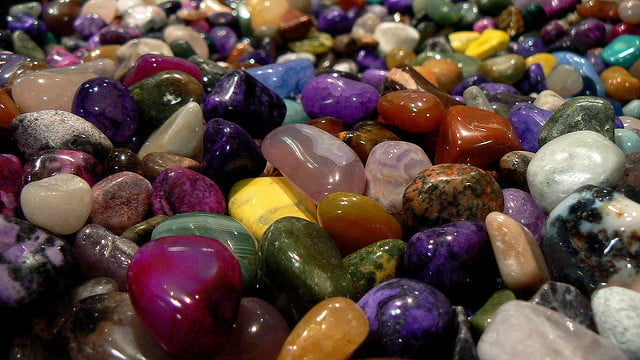Common Sense Gemstone Grading: An Alternative System
Can gem grading avoid subjective terms? Learn about gemologist Jeff Graham's common sense gemstone grading system, an alternative to commercial approaches.
3 Minute Read
I'm sharing here what I believe is a common sense gemstone grading system for color, clarity, and treatments. Anyone who wishes can use this approach.
I don't use the GIA's grading system for colored stones, except when dealing with gemstones that I have had GIA graded.
Common Sense Gemstone Grading: Color
Color is an arbitrary thing. Different people as well as cultures have different tastes. A fair amount of variance is to be expected. In my opinion, once the clarity of a stone is graded correctly, people can decide what color(s) they prefer and make their choices accordingly. Yes, some colors are often considered more valuable than others. In general, the more intense and bright the color, the more valuable the gem. However, I feel the best way to account for color ranges is in the pricing, not grading, precisely because tastes and color perceptions vary widely.
This is a method for describing a gemstone color's tone.
- Pale: Almost colorless to 15% tone
- Light: 15% tone to 30%
- Light/Medium: 30% tone to 45%
- Medium: 45% tone to 65%
- Medium/Dark: 65% tone to 85%
- Dark: 85% tone to 100%
Common Sense Gemstone Grading: Clarity
Use this scale to grade clarity regardless of gemstone "types."
- IF (Internally Flawless): Free of inclusions under a 10x loupe magnification.
- VVS1 (Very, Very Small Inclusion): Very small inclusion(s) under 10x loupe magnification, difficult to find.
- VVS2 (Very, Very Small Inclusions): A few, very small inclusions under 10x loupe magnification, difficult to find.
- VS1 (Very Small Inclusions): Very few small inclusions recognizable by an expert under 10x loupe magnification.
- VS2 (Very Small Inclusions): Some small inclusions recognizable by an expert under 10x loupe magnification.
- SI (Small Inclusions): Several small inclusions easily recognizable under 10x loupe magnification but don't diminish the brilliance appreciably. (This is what I would call "eye clean," but this term is often abused).
- I (Inclusion): Inclusion(s) easily recognizable under 10x loupe magnification but don't diminish the brilliance appreciably.
- P1 (1st Pique): Inclusions at once recognizable under 10x loupe magnification but don't diminish the brilliance of the stone appreciably.
- P2 (2nd Pique): Large and/or many inclusions, slightly diminish the brilliance, recognizable with the naked eye.
- P3 (3rd Pique): Large and/or many inclusions diminish the brilliance, easily recognizable with the naked eye.
Common Sense Gemstone Grading: Disclosing Treatments
- None Known: No known treatments. (Please note that there could be a very small possibility of some treatment done at the mine or before the cutter acquired the rough/stone that the cutter may be unaware of. However, in general, there will be no treatments of any kind in this grade category).
- Unknown, but likely Heated: No known treatments, but an acknowledgement that this type of rough/stone is often heated.
- Heat: Heat only. Heating is commonly done to lighten or eliminate an unwanted color in some rough/cut stones.
- Unknown, but likely Treated: No known treatments, but an acknowledgement that this type of rough/stone is often treated.
- Treatment(s): Treatment(s) are a fairly common practice and there are many types. Whatever treatment is detected in the specimen will be listed and defined.
- Irradiated: Irradiation is used to change or improve the color of a cut/rough stone.
- Unknown: If you have no idea if the specimen examined has been treated.
Jeff R. Graham
The late Jeff Graham was a prolific faceter, creator of many original faceting designs, and the author of several highly-regarded instructional faceting books such as Gram Faceting Designs.
Related Articles
Michael Hing’s Jubilee Project
OMNI Faceting Machine
Gemray or GemrayX Head Shadow
Kraftwerks Event 2003
Latest Articles
Identifying Synthetic Gems
Ten Big, Beautiful, and Affordable Engagement Ring Stones
Rhodochrosite Value, Price, and Jewelry Information
Ruby and Sapphire Survey: Where Do You Draw the Line?
Never Stop Learning
When you join the IGS community, you get trusted diamond & gemstone information when you need it.
Get Gemology Insights
Get started with the International Gem Society’s free guide to gemstone identification. Join our weekly newsletter & get a free copy of the Gem ID Checklist!
